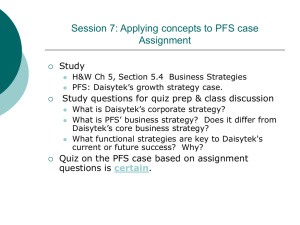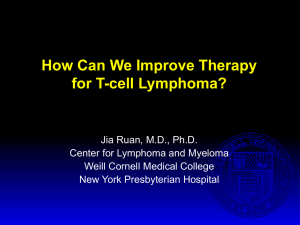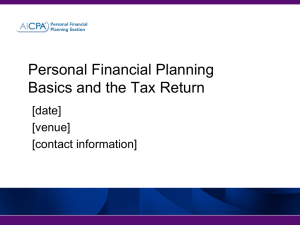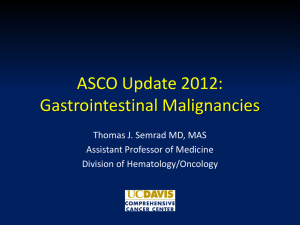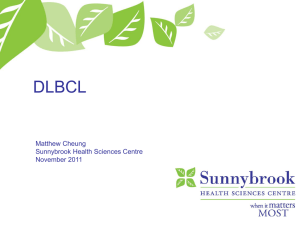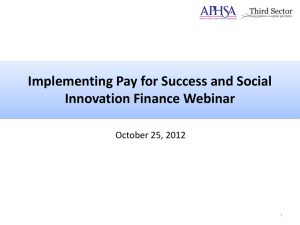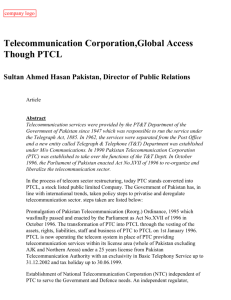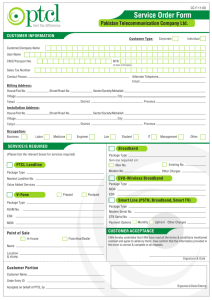How do we best deploy novel agents for T cell lymphoma
advertisement
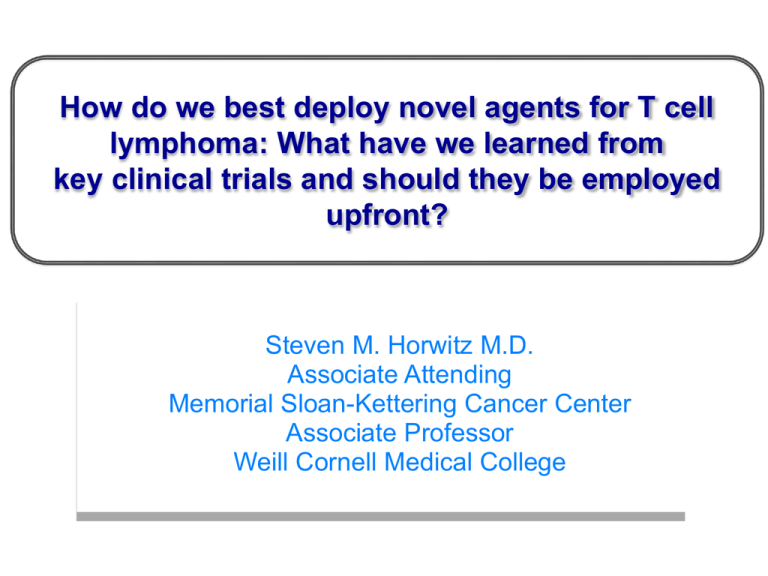
How do we best deploy novel agents for T cell lymphoma: What have we learned from key clinical trials and should they be employed upfront? Steven M. Horwitz M.D. Associate Attending Memorial Sloan-Kettering Cancer Center Associate Professor Weill Cornell Medical College 3 questions How do we best deploy novel agents for T cell lymphoma? Carefully and somewhat empirically What have we learned from key clinical trials? Most ORR and toxicity Should they be employed upfront? Probably not routinely outside of clinical trial Single Agents in the Relapsed Setting Approved Agents in Relapsed/Refractory PTCL Belinostat N=129 Outcomes Romidepsin N=131 Pralatrexate N=109 2 Median prior Rx 2 3 26% ORR 25% 29% 11% CR 15% 11% 15% PR 11% 18% 8.4 Median duration of response 17 months 10.1 months 1.6 Median PFS 4 months 3.5 months O’Connor OA, et al. J Clin Oncol. 2011;29:1182-1189 Coiffier B, et al. J Clin Oncol. 2012;30 :631-636 O’Connor OA, et al. ASCO 2013 MLN8237 (Alisertib):Response (PR+CR) by Histology Category PTCL, NOS Response n (%)* Angioimmunoblastic 4/13 (31%) 3/9 (33%) Anaplastic, ALK neg 1/2 (50%) Adult T-cell (HTLV-1) 1/4 (25%) Extranodal NK/T-cell 0/2 Transformed MF 0/7 Barr et al. ASCO 2014 Progression Free Survival: Relapsed/Refractory PTCL BCCA by PS Pralatrexate N=109 Romidepsin N=130 Belinostat N=129 Mak V et al. JCO 2013;31:1970-1976, O’Connor OA, et al. J Clin Oncol. 2011;29:1182-1189, Coiffier B, et al. J Clin Oncol. 2012;30 :631-636, O’Connor OA et al ASCO 2013 Phase II Study of Pralatrexate 1.00 ORR 29% Median duration = 10.1 months Proportion 0.75 Permanently censored (eg, transplant) (n = 8) Continue in follow-up for response (n = 8) 0.50 0.25 0 0 3 6 9 Months 12 15 18 O’Connor OA, et al JCO Jan 18 2011 Continuous Therapy in Relapsed T-cell Lymphoma Belinostat DoR AITL Median 13.6 mos Romidepsin PFS by Response Pralatrexate for CTCL: Progression Free Survival Cohort >15 mg/m2 N=41 Med PFS 388 days Autologous Transplantation in Relapsed PTCL CIBMTR: PFS excluding pt in CR1 (Most patients ALCL) The Stanford Experience Auto MSKCC Median PFS 6 months 1.0 0.8 0.6 % 0.4 0.2 0.0 0 12 24 36 48 60 72 84 96 108 120 132 PFS ICE months Response to ICE 70% (28/40) Received ASCT 68% (27/40) • Benefits are unclear. Most single institution studies show low PFS rates while registry data suggests better outcomes Smith S, et al. JCO 2013. Abstract 689; Chen AI, et al. Biol Blood Marrow Transplant. 2008;14(7):741-747. Horwitz et al, ASH 2005 Retrospective Analyses of Allogeneic Stem-cell Transplantation for PTCL French Registry N=77 TRM 34% 5 year OS 57% 5 year EFS 53% Le Gouill, S. et al. J Clin Oncol; 26:2264-2271 2008 Goldberg J. et al. Leuk Lymphoma. 2012 Jan 31 MSKCC N=34 TRM 18% 2 year OS 61% Algorithmic Approach to Patients with Relapsed PTCL (NOS, AITL, ALCL) Transplantation soon (Donor known; patient eligible) Combination chemotherapy (ICE, other combinations) Transplantation unclear (Donor unknown; patient may or may not be eligible) Clinical trial or single agent Transplantation never (Physician or patient determines patient ineligible) Clinical trial or single agent Lunning et al. J Clin Oncol, 2013;31: Allogeneic stem-cell transplantation POD intolerance Clinical trial or single agent Differential resposnes ORR (%) by Lymphoma Subtype Subtype PTCL, NOS Brentuximab Pralatrexate Romidepsin Belinostat vedotin 33 31 29 23 AITL 8 30 46 54 ALCL 29 24 15 86 O’Connor OA, et al. J Clin Oncol. 2011;29:1182-1189. Coiffier B, et al. J Clin Oncol. 2012;30:631-636, Horwitz, S et al ICML 2013, Horwitz S M et al. Blood 2014;123:3095-3100 Pro B, et al. J Clin Oncol. 2012;30:2190-2196. Combinations DLBCL vs. PTCL OS Percentage of Treatment Group 100 CHOP plus rituximab 80 60 CHOP 40 PTCL 20 P < 0.007 0 0 0.5 1.0 1.5 2.0 2.5 3.0 Year after randomization Coiffier B et al. N Engl J Med. 2002;346:235-242. Vose et al. J Clin Oncol. 2008;26:4124–4130, T-cell Lymphoma: Current approaches that may be better than CHOP International T-cell Project (retrospective) Anthracycline containing >85% N=299 5 yr OS 32% 1.0 0.9 0.8 0.7 Nordic Study CHOEP-ASCT, N=166 5 yr OS 51% 0.6 0.5 0.4 0.3 0.2 0.1 0.0 0 1 2 3 4 5 6 7 8 9 10 11 12 13 14 15 16 17 18 Better Results with more intensive therapy? Patient selection? Vose et al. J Clin Oncol. 2008;26:4124–4130, International T-cell Classification Project D’Amore, et al. J Clin Oncol. 2012;30(25):3093-3099 Phase II Study of Denileukin Diftitox + CHOP in PTCL: “CONCEPT” Trial Interim Results •7 D/C due to Adverse Events •anaphylaxis Phase II, newly diagnosed aggressive PTCL •pneumonia 18mcg/kg/d D1-2, CHOP D3 •pneumonitis N=49 (80% PTCL/AITL/ALCL) •LFTs CR 75.7%, ORR 86.5% •cardiac arrest x 2 •TLS/rhabdo •POD-7 •Patient request •Early Discontinuation 20 (41%) Foss et al. 10th ICML Lugano, June 5, 2008 Alemtuzumab (A) + Chemotherapy First-line treatment of PTCL Citation n PTCL A dose mg Chemo ORR/CR % PFS/EFS % Toxicity Gallamani Blood 2007 24 14 30 CHOP-28 75/71 (50% PTCL) 48 (2 yr) 17% G4 infection Kim Chemother Pharmacol 2007 20 30 CHOP 80/65 43 (1 yr) 10% death infection KluinNelemans Annals of Oncol, 2011 20 90/60 27 (2 yr) 15% EBV=LPD 20% TRM 10 30x3 CHOP-14 Single agent: N=14, Phase II, RR 36%, 5 deaths Enblad et al. Blood. 2004;103:2920-2924. The ACT trial AFTER the dose/age amendment ACT-1 ACT-2 18 yrs 80 yrs 65 yrs R R CHOP-14 A30 - CHOP-14 CHOP-14 A30 - CHOP-14 CHOP-14 A30 - CHOP-14 CHOP-14 A30 - CHOP-14 CHOP-14 A30 - CHOP-14 CHOP-14 A30 - CHOP-14 CHOP-14 A30 - CHOP-14 CHOP-14 A30 - CHOP-14 CHOP-14 A60 CHOP-14 CHOP-14 A60 CHOP-14 CHOP-14 A60 CHOP-14 CHOP-14 A60 CHOP-14 HDT HDT No ALCL cases ACT-1 Response rates and time-related end-points 15 mo median follow-up Response rates Time-related end-points Primary 1.0 CR/CRu 42 (67) 38 (61) EFS 0.9 0.9 0.8 0.8 0.7 0.7 Proportion ORR N (%) Proportion Response rates 0.6 0.5 0.4 4 (6) OS 0.6 0.5 0.4 0.3 0.3 0.2 0.2 0.1 0.1 PR Secondary 1.0 0.0 0.0 0 0 5 10 15 20 25 30 35 40 45 5 10 15 20 25 30 35 40 45 50 50 Months Months SD 3 (5) PD Not evaluable Total End-point 1-yr (95% CI) 16 (25) EFS 55% (42-67) 2 (3) PFS 54% (42-67) 63 (100) OS 78% (67-88) d’Amore et al, ASH 2012 Phase I/II Pralatrexate in Combination with Gemcitabine Initial design: pralatrexate day 1 and gemcitabine day 2 weekly 3/4 weeks (Cohort A) Starting Doses Pralatrexate 15 mg/m2 and Gemcitabine 400 mg/m2 Phase I Initial Dosing The initial study design was to give pralatrexate day 1 and gemcitabine Cohort PDX/Gem DLT(Cohort A); due to DLT day 2 on a weekly schedule 3Schedule out of every 4 weeks hematologic toxicity the weeks subsequent Cohorts received drugs 1 15/ 400observed 3/4 2/2 Neutro: both Gr3,4Throm: Gr3,4 on Q2 B –weeks sequential days) C – same -1 week schedule 10/400 (Cohort3/4 2/2 and (Cohort Throm: Gr 3 day pralatrexate followed 1h later by gemcitabine) -2 10/300 3/4 weeks 2/3 Neutro: Gr 3, Throm: Gr3 •Study modified to Every other Week dosing •Pralatrexate day 1 and gemcitabine day 2 (Cohort B) •Pralatrexate day 1 and gemcitabine 1 hour later (Cohort C) Horwitz et al ASH 2009 a1674 CEOP-Pralatrexate PFS Cycle A: CEOP -Cyclophosphamide 750 mg/m2 IV d1 -Etoposide 100 mg/m2 IV d1-3 -Vincristine 2 mg IV day 1 -Prednisone 100 mg/day X 5 •Cycle B: Pralatrexate (P) - 30 mg/m2 IV d 15, 22 and 29 N=33 ORR 70% CR 52% months Advani et al. ASH 2013 Romidepsin-CHOP Dose-escalation Phase New definition of DLTs (amendment °1) Cohort 1 10 mg/m2 N=3 Cohort 5 12 mg/m2 N=3 Cohort 6 12 mg/m2 N=3 Cohort 4 10 mg/m2 N=3 Cohort 2 10 mg/m2 N=3 Cohort 3 8 mg/m2 N=3 1 DLT Syncope Gr 3 2 DLTs Hem Gr 3 NO DLT NO DLT 1 DLT Pulmonary edema Gr 3 2 DLT Nausea DOSE USED FOR PHASE 2 SAEs: 2-acute myocardial infarction 1-acute pulmonary edema, all after first cycle, none fatal Thrombocytopenia led to discontinuation of Romidepsin in 5 patients Dupuis et al. ICML 2013 Romidepsin-CHOP PFS (Median Follow-up 10 months; n=27) CR 15/27 (55.6%) ORR 20/27 74% 1 year estimated PFS 63.9% (95%CI 35.4 – 82.5) Dupuis et al. ICML 2013 Phase III Ro-CHOP Study International randomized, open-label study Principal objective: PFS improvement Planned accrual: 420 patients Brentuximab + CH-P Response and PFS sALCLN (%) Other DxN (%) TotalN (%) ORR 19 (100) 7 (100) 26 (100) CR 16 (84) 7 (100) 23 (88) PR 3 (16) -- 3 (12) PFS N=26 Median F/U 21.4 mos Est 1 yr PFS 71% Fanale et al JCO epub September 2014 A Randomized, Double-Blind, Placebo-Controlled, Phase 3 Study of Brentuximab Vedotin and CHP (A+CHP) Versus CHOP in the Frontline Treatment of Patients with CD30positive Mature T-cell Lymphomas PTCL-CD30+ (> 10%) If ALK+ ALCL IPI >2 R A N D O M I Z E N=300 Primary endpoint PFS approx. 45% improvement BV + CH-P” x 6-8 cycles RESTAGE C4 Placebo+ CHOP” x 6-8 cycles F/U Progression Death Phase III Trials Untreated PTCL Intervention Patient Population Primary Endpoint s Status Alemtuzumab + CHOP14 + G-CSF vs CHOP14 + G-CSF Newly diagnosed PTCL EFS Completed Brentuximab vedotin + CHP vs CHOP CD30+ PTCL PFS Ongoing CHOP pralatrexate Newly diagnosed PTCL PFS, OS Closed Romidepsin + CHOP vs CHOP Newly diagnosed PTCL PFS Ongoing Belinostat + CHOP or Pralatrexate + CHOP vs CHOP Newly diagnosed PTCL PFS Planned 3 questions How do we best deploy novel agents for T cell lymphoma? Carefully and somewhat empirically What have we learned from key clinical trials? Most ORR and toxicity Should they be employed upfront? Probably not routinely outside of clinical trial
